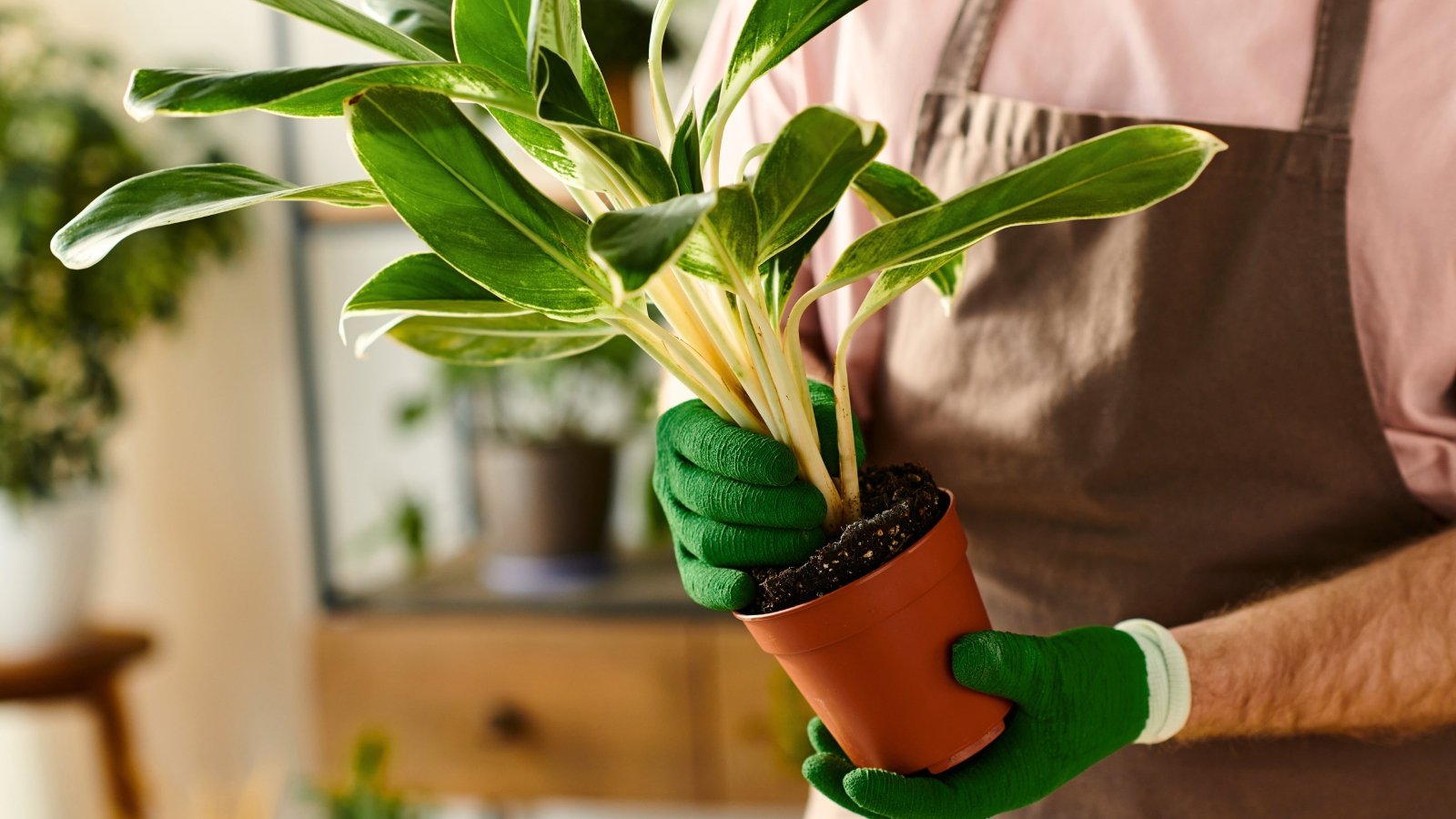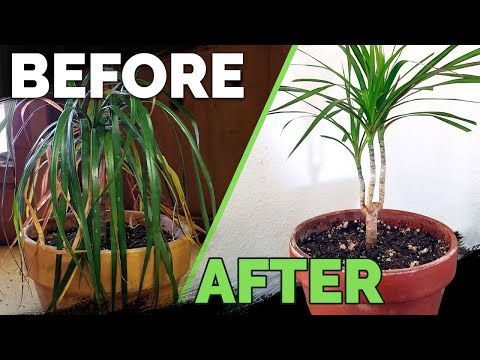The selection of whether or not or not or to not repot your houseplant from its distinctive plastic pot could also be sophisticated. It’s tempting to look to the net for easy options and a rule of thumb, supplying you with a specific timeframe to complete the responsibility.
Nonetheless, very like how houseplants are often not watered at specific intervals—and can as an alternative get hold of water as wished—there is no such thing as a such factor as a set time for a method prolonged your new pothos or fern should hold in its nursery pot.
If it appears glad, there’s an excellent chance you might go away it alone for a yr, or maybe even much more. Alternatively, should you occur to’ve obtained a cactus in a plastic pot with muddy soil and rocks glued on prime—you must take emergency measures.
There’s heaps to consider when making your alternative. We’ll stroll you via the thought course of, so you might protect your houseplants glad and healthful for years to return, presumably of their distinctive plastic pots.
The Temporary Reply
How prolonged are you able to allow houseplants of their distinctive plastic pots? It truly depends upon, and there is no transient reply. There are quite a few parts that determine how prolonged a houseplant will proceed to develop and thrive in its plastic pot, and whereas some vegetation may revenue from repotting ASAP, others is also alright for numerous rising seasons—maybe even years.
The Prolonged Reply
Often, when determining whether or not or to not repot a healthful houseplant that you just simply’ve been rising for some time, there are numerous most important parts that you just simply take into account:
- Has the plant outgrown its current pot, as evidenced by roots rising out of the drainage holes or above the soil line?
- May it revenue from a fully completely different type of pot, e.g., clay, ceramic, or plastic, providing additional air circulation to the roots or a heavier base for a top-heavy plant?
- Is the substrate notably outdated, compacted, devoid of nutritional vitamins, and presumably even decaying, counting on the medium?
Nurseries, large area retailers, and yard services often promote houseplants in plastic pots, also referred to as “nursery pots.” When you occur to’ve these days purchased a plant or acquired one as a gift, there could also be far more to consider than the components above.
Soil is Key


Additional mandatory than the exact nursery pots is the soil or potting mix whereby the houseplant is rising. An intensive analysis of the usual and whether or not or not it matches the needs of the plant in question is the chief concern when deciding whether or not or not and when to repot a model new plant nonetheless in its distinctive pot.
Anyone who’s explored every the houseplant variety of a boutique nursery and an enormous area ironmongery retailer can inform you: not all nursery pots (and the soil inside them) are created equal. Whereas a specialty retailer may nestle a cactus proper right into a plastic pot with a well-draining mix, a ironmongery retailer may stuff it in a plastic pot with all-purpose potting mix—and glue rocks on prime for aesthetic capabilities.
So, from the get-go, it’s essential to acknowledge that not all nursery pot and soil mixtures are the similar, so there could also be no precise rule on how prolonged you might go away vegetation rising inside them. As an alternative of going off a rule-of-thumb timeframe, as an alternative, evaluation the plant’s needs, study its current set-up, take into account its properly being, after which make your alternative.
Evaluation Care Needs
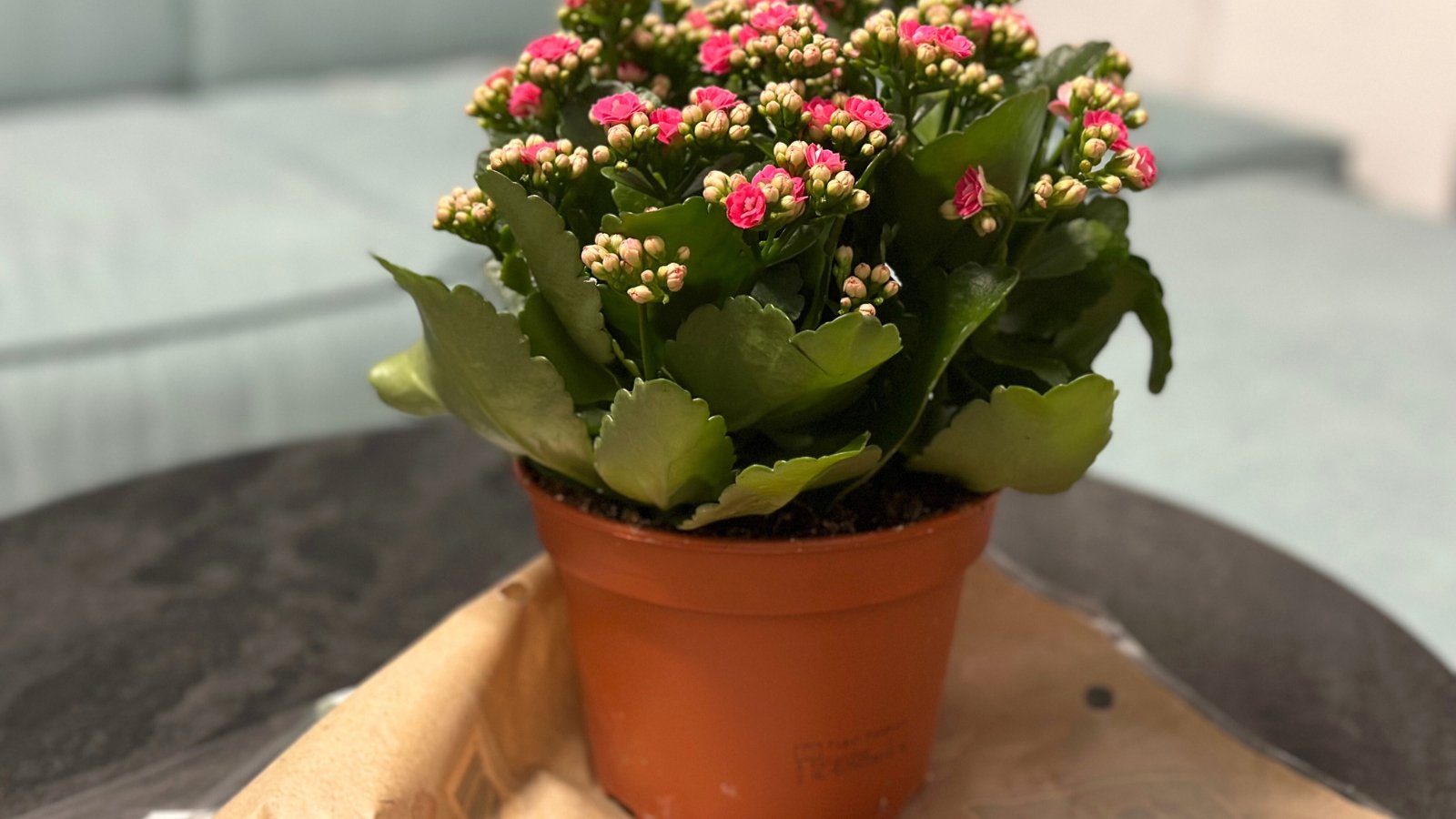

Determining what your new plant needs is foundational in determining how prolonged it’ll probably hold in its nursery pot. When you occur to’re not accustomed to its soil preferences, you’ll do not know if it’ll probably proceed to develop in its current container or should you occur to should take away it sooner comparatively than later.
When you occur to aren’t already acquainted, do some little bit of research about your plant. Many widespread houseplants favor or require well-draining soil. That’s the case not only for standard cacti and succulents however moreover for snake vegetation, ZZ vegetation, and further.
“Successfully-draining” soil permits additional water to quickly drain by, and it dries out fairly quickly. The soil ought to have the power to dry out totally sooner than you water as soon as extra. Regular all-purpose potting mix does not drain and dry out fast ample in a number of conditions. A standard cacti and succulent mix, however, often shall be sufficient.
Many tropical species shall be happy with a primary all-purpose mix, like pothos vines. Lastly, there are some widespread decisions, along with orchids and carnivorous vegetation, which have fully distinctive requirements. You’ll must have these preferences in ideas should you get to the next step.
Study the Current Set-Up
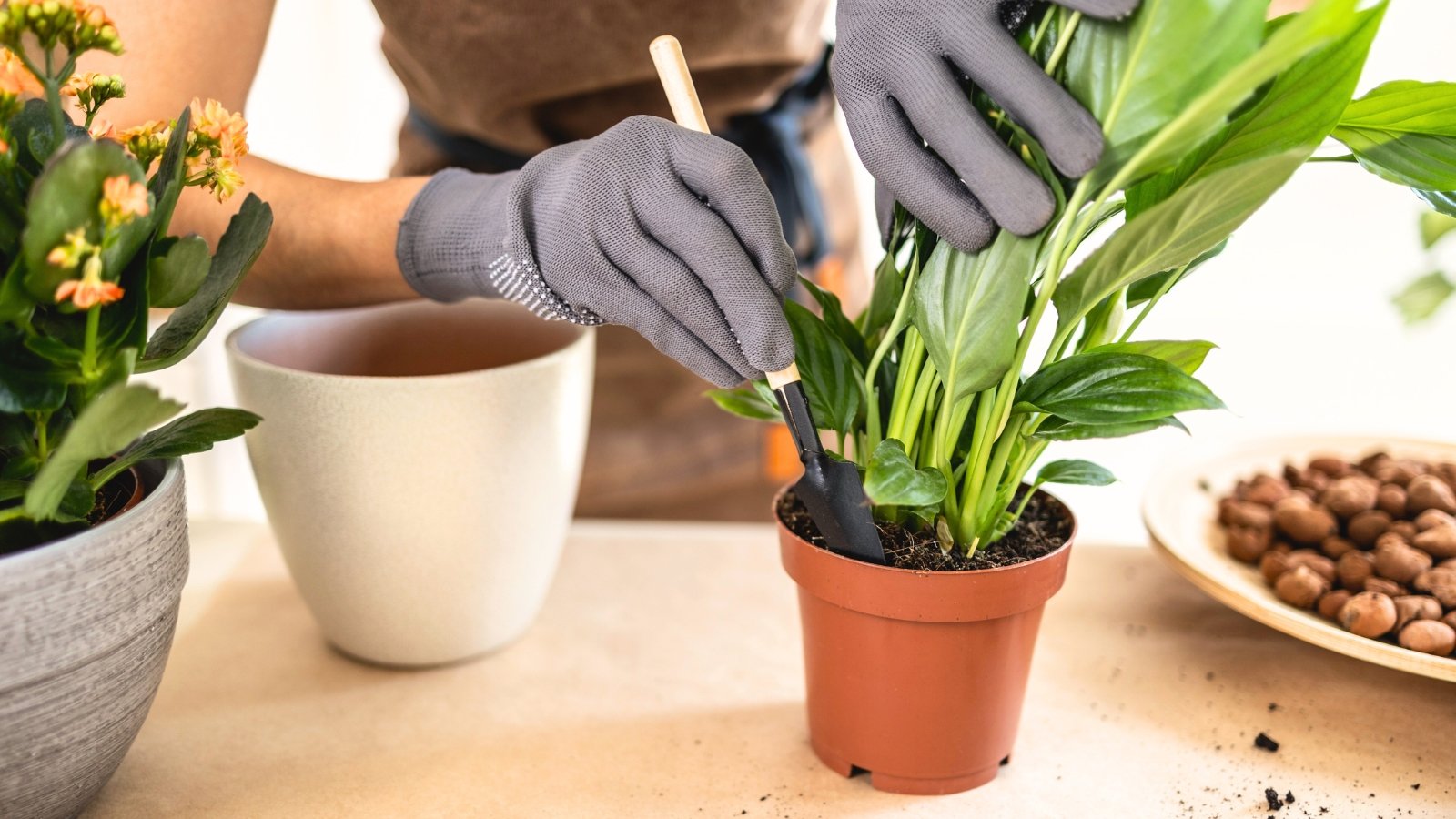

As a rule, it seems to be like retailers pair distinctive plastic pots with moist, moisture-retaining soil, which is rarely the perfect choice for widespread houseplants. It’s truly the mistaken choice for cacti and succulents—which favor sandy, well-draining soil—and orchids and completely different epiphytes—which don’t truly develop in soil the least bit and subsequently need chunky media mixes.
If you’ll purchase an Aloe vera, associated succulent, or snake plant and uncover it in a moist potting mix, then it’s best to perhaps repot it as rapidly as potential. When you occur to take home an orchid that it’s in an affiliation with potting mix and houseplants with fully completely different watering requirements, you’ll want to remove it instantly.
That talked about, there are a variety of widespread species that won’t ideas a heavier mix. Peace lilies and ferns favor soil that not at all truly completely dries out, so counting on the usual of the potting mix, they could actually be okay.
What about tropical houseplants that fall someplace in between? Pothos vegetation and Philodendron species don’t exactly desire a cactus mix, nonetheless they don’t want to take a seat in repeatedly moist soil, each. For these favorites, you’ll must make a judgment title. If the soil is damp nonetheless water can run by, it could possibly be alright. If it’s actively moist and puddling, then it doesn’t drain successfully ample.
Lastly, don’t overlook to seek for a drainage hole. Nursery pots almost always have drainage holes, nonetheless should you occur to find one with out a way for additional water to empty by, then it’s merely no good. You have to repot the plant at your earliest consolation.
Think about Nicely being
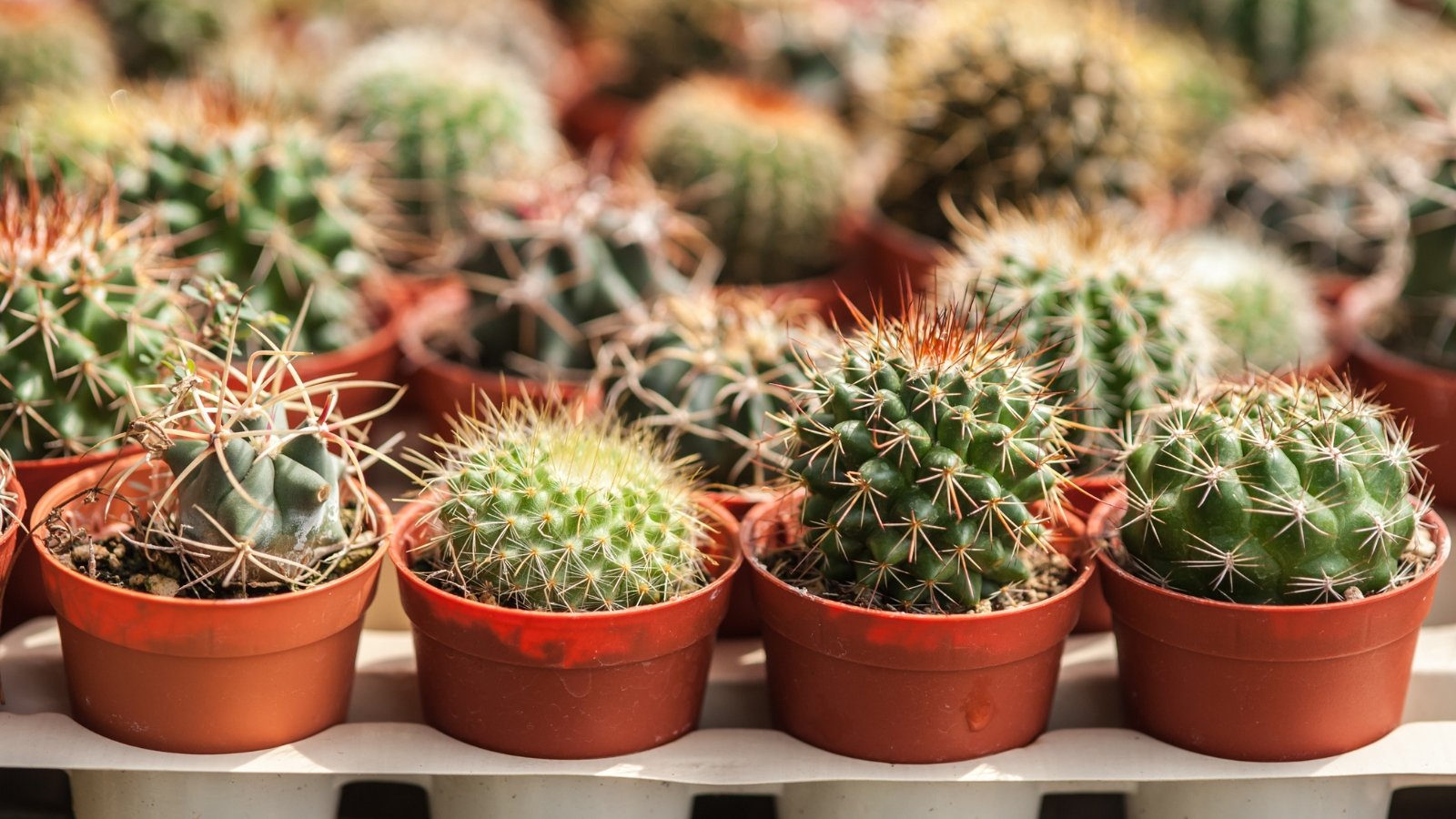

Subsequent, have in mind the plant’s properly being. If the soil seems okay to you based totally in your evaluation, and the plant appears healthful, putting on new progress, presumably blooming, and often wanting cheery—perhaps the current vessel is satisfactory.
Bear in mind that typically houseplants will proceed to look stellar for pretty a while even in sub-par conditions, so a good-looking specimen is simply not always a guarantee that it’s glad in its plastic pot. If a cactus appears lovely nonetheless is in the mean time sitting in a heavy potting mix, you then could’ve merely caught it sooner than seen indicators of rot.
Alternatively, a visibly unhealthy plant is set off for concern instantly. There are quite a few the reason why it could possibly be struggling that are unrelated to its plastic pot, along with pests, sickness, and incorrect environment conditions at its earlier location, nonetheless there are moreover numerous circumstances that repotting can resolve.
If the houseplant is wilting, as an example, and you might even see that there are tons of roots poking out of the soil, then it’s ready for a repot. It’s outgrown its outdated container. Alternatively, if a peace lily retains drooping inside days of you watering it, then it’s perhaps in soil that doesn’t retain ample moisture. Time to repot it.
Make Your Alternative
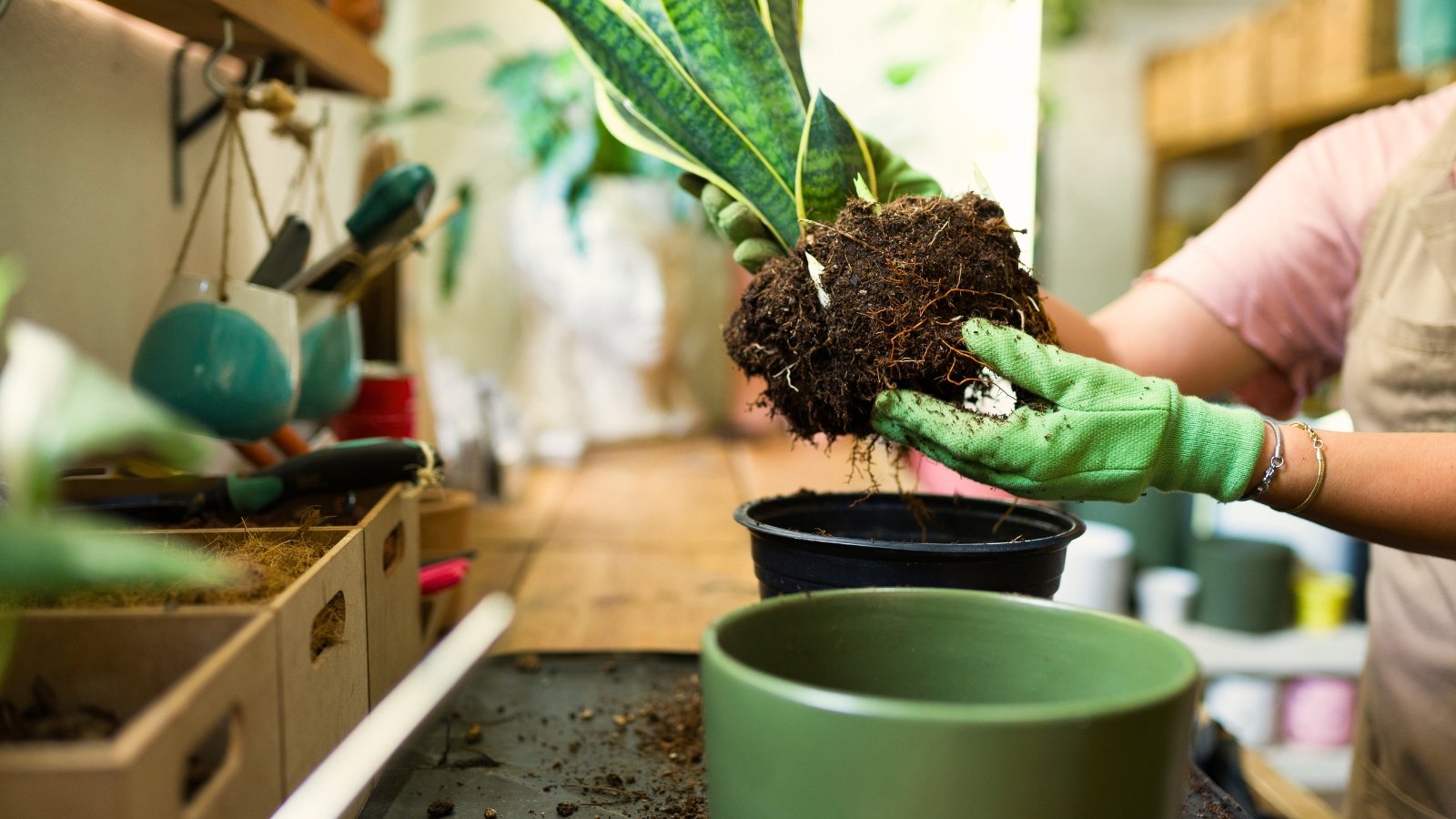

So now, with all of this knowledge in ideas, you might decide whether or not or not your plant is glad in its plastic pot and the way in which prolonged you might go away it as-is. There are quite a few conditions the place houseplants can hold of their plastic pots for years, and there are moreover conditions whereby you must make a change as rapidly as you might.
In case you’ve gotten a healthful specimen that’s flourishing in its plastic pot, there is no such thing as a such factor as a trigger to put a timer on points. You don’t have to repot it into one factor new, until the plant outgrows it. Really, shifting a healthful plant right into a model new container or shifting it usually can lead to transplant shock. Don’t trick your self into pondering the nursery pot is harmful, if it’s not.
Frequent Low-Maintenance Species


Vegetation that are virtually undoubtedly to stay healthful in distinctive plastic vessels for a really very long time are sometimes easy-going, low-maintenance vegetation, like golden pothos, Philodendron ‘Brasil’, and peace lilies. In case you don’t have any trigger to think about these species are struggling and nor do you suppose they need extra room, merely go away them alone.
Cacti and Succulents
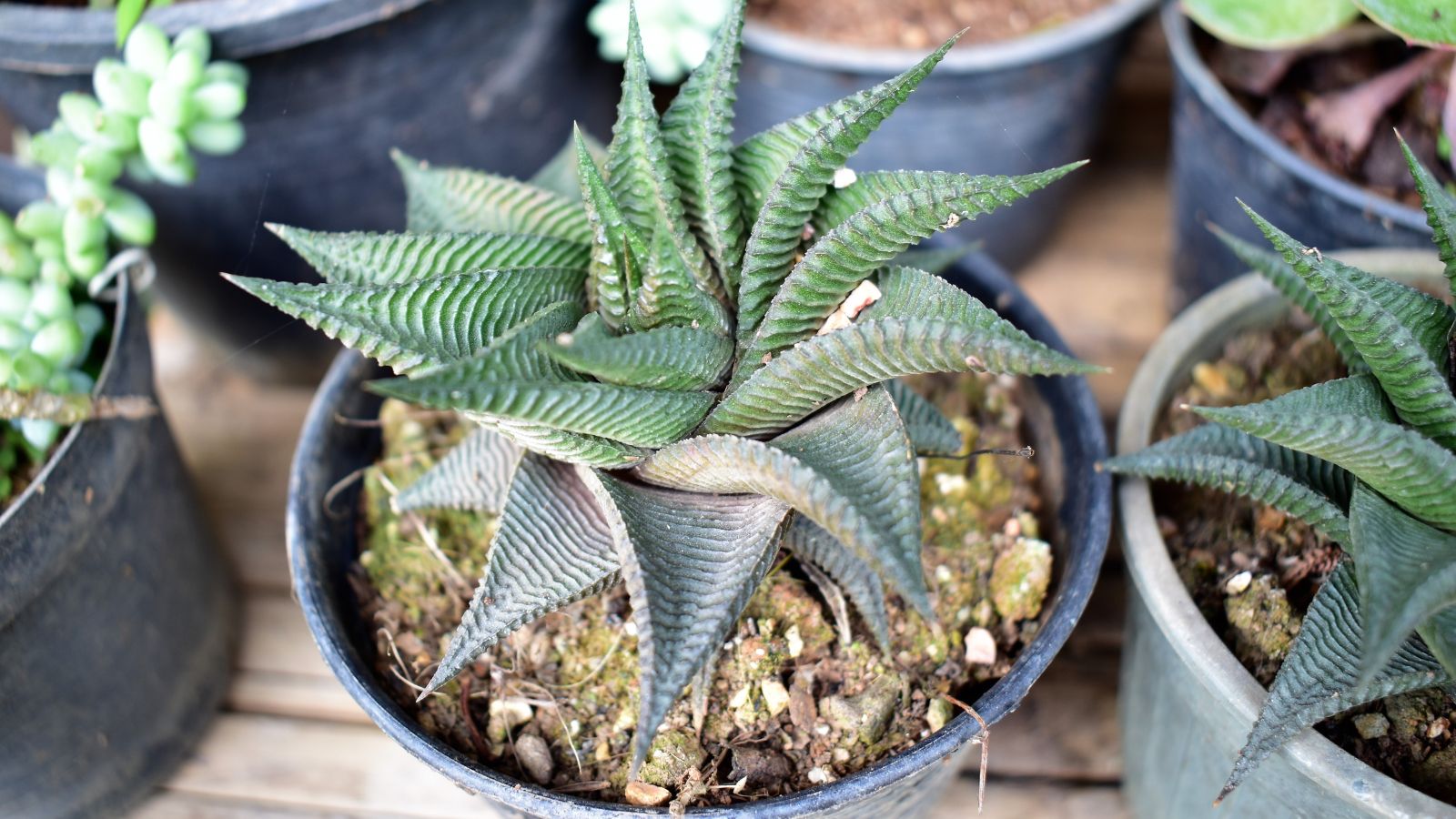

Frequent indoor vegetation that are virtually undoubtedly to want repotting sometime rapidly are cacti, succulents, houseplants in preparations, and orchids. Cacti and succulents not solely need well-draining soil, however moreover, they should truthfully be in terracotta or one different “respiratory” supplies, like clay, extra rising air circulation.
Whereas houseplant preparations could also be beautiful and make gratifying presents, they’re usually doomed from the start. A snake plant, orchid, and fern have terribly fully completely different needs, and within the occasion that they’re all planted collectively within the similar mix and similar pot, there’s no method they’re going to all survive. You have to take away, separate, and repot them into relevant media.
Orchids and Carnivorous Vegetation
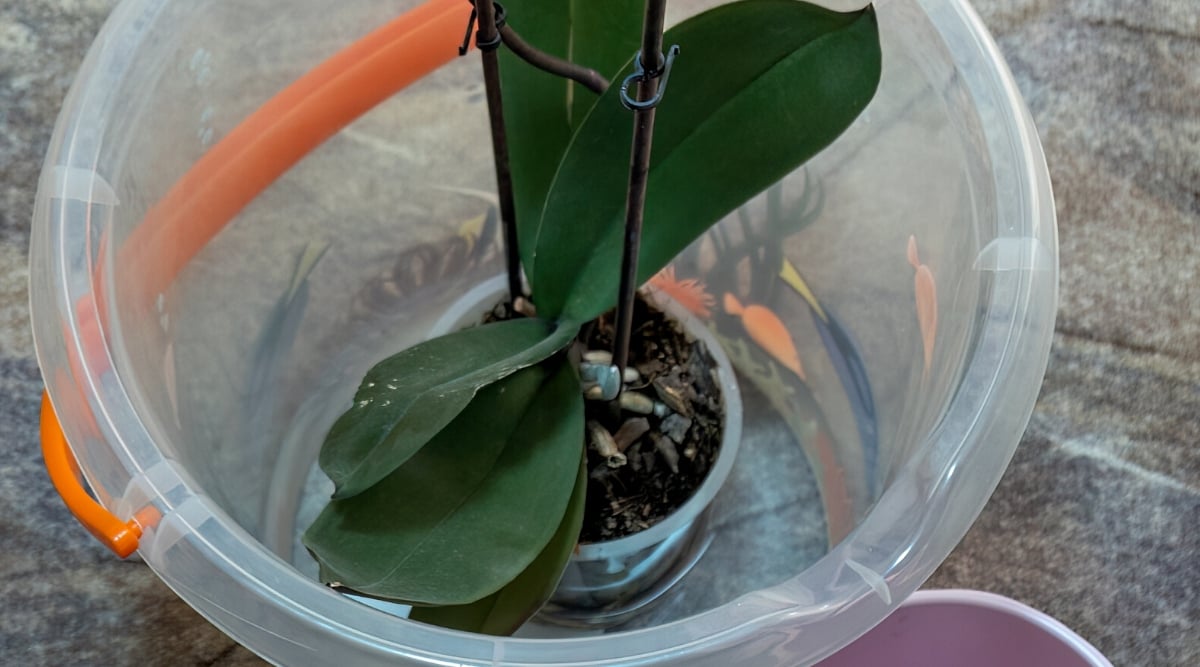

Lastly, orchids and carnivorous vegetation could also be robust. Giant area retailers usually have orchids inside the mistaken media. Though it’s decided by the species, many orchids (along with Phalaenopsis orchids), develop biggest in a extremely chunky orchid mix and in a pot with large slits for air on the sides.
Whereas your new orchid is blooming, there’s no must disturb it, but it surely absolutely’s inside the mistaken medium and in a pot with out air slits, water with extreme warning. Repot it after it has accomplished blooming. That talked about, many nurseries do a implausible job establishing orchids in the perfect medium. It depends upon.
Carnivorous vegetation have gotten more and more widespread inside the houseplant commerce, notably the standard venus flytrap, which is often obtainable at {{hardware}} retailers and supermarkets. This species is assumed for its functionality to “eat” bugs, which is the place it’ll get its nutritional vitamins. These vegetation are often not setting pleasant at taking over nutritional vitamins from soil, so fertilizer-dense all-purpose potting mix can actually hurt them.
In case you’ve gotten a venus flytrap, pitcher plant, or associated carnivorous species and it’s residing in its distinctive plastic pot in an all-purpose mix, it is doable you will must repot it sooner comparatively than later. Whereas the container itself is okay, the soil is simply not. Repot it in a mix of sphagnum moss and perlite.
Closing Concepts
In summary, you might go away houseplants of their distinctive plastic pots for as long as the vegetation keep in good properly being, and whether or not or not they proceed to thrive is based not quite a bit on the pot nonetheless additional so on the soil. Typically, changes must be made instantly.
As an alternative of relying on a determined rule like “wait not lower than one yr,” as an alternative do some evaluation regarding the plant, take into account its current set-up and scenario, after which decide whether or not or not or to not go away it alone or make the transition right into a model new vessel.
[ad_2]
Provide hyperlink
